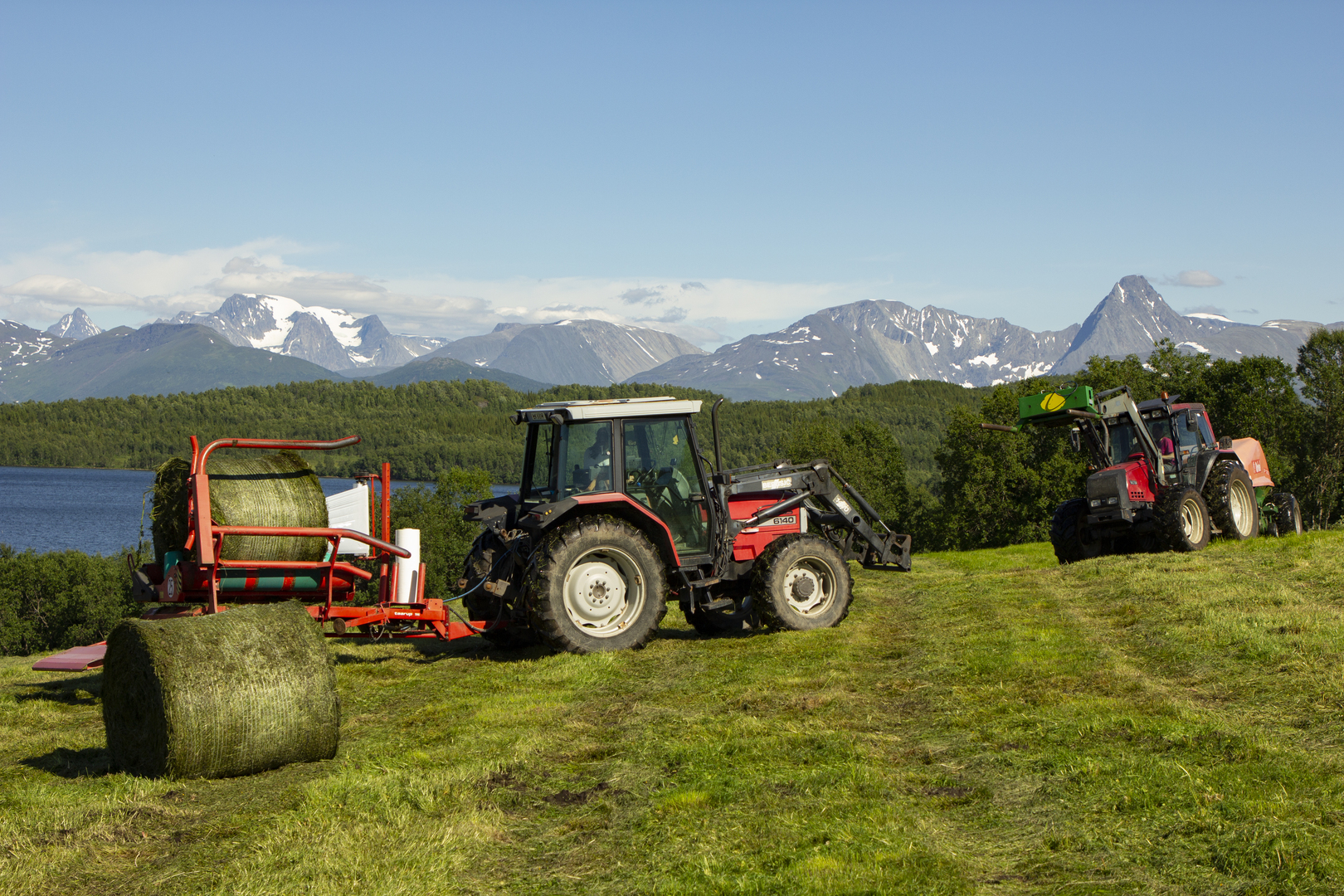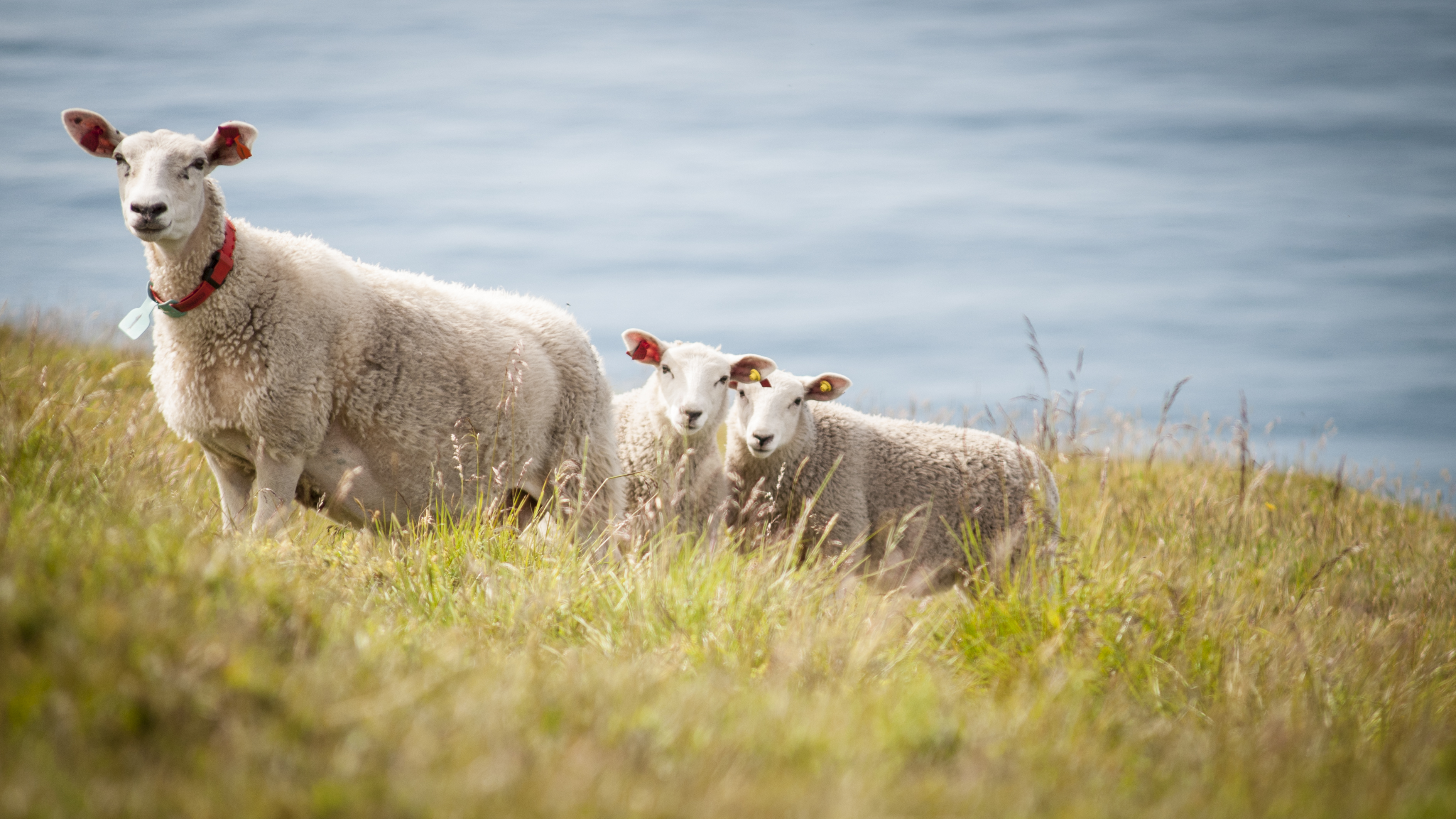“We need new analyses and methodology for our time”
Is Northern Norway prepared to handle cuts in food supplies during a crisis – or a wartime situation? According to UiT Professor Magritt Brustad, who leads the Resilient North project, the region is vulnerable to several threats concerning food supply.

The population of Northern Norway may face challenging situations in the decades to come. This includes extreme weather, conditions affecting infrastructure in the north, or various forms of geopolitical threats.
An unpredictable world has created a new impetus to build more knowledge that can promote civil societies that are resilient and adaptable.
In the Norwegian Total Preparedness Commission's report ‘The time is now – prepared for an uncertain future’ , the region is described as strategically important but also vulnerable. This is particularly true when it comes to the level of food supply. No more than 40 per cent of the food we eat in Norway is actually produced in Norway. The self-sufficiency rate in Troms County is only seven per cent.
“In light of a renewed threat landscape, we are beginning to understand how important it is to strengthen both national and regional food production, says Magritt Brustad, professor of nutrition at UiT,” who leads the research project Resilient North.

Short-term and long-term development
In the project, researchers from UiT, in collaboration with Nofima and the Norwegian Institute of Bioeconomy Research (NIBIO), will map how food production is linked to public health in Northern Norway during crises and wartime situations. They will also analyse how political decisions and governance influence this picture.
Brustad believes that Northern Norway is a vulnerable region but that it has much greater potential for food production than is currently being utilised.
“In our project, we will analyse what affects the long-term production capacity for agriculture, fisheries, and aquaculture. We will also examine how various short-term crisis situations impact food production. The analyses will be based on a range of datasets on food production across different sectors and factors important for production,” she states.
Strengthening food preparedness
Researcher Frøydis Gillund from NIBIO is a key partner in the project. She points out that the region has good self-sufficiency when it comes to meat and dairy products, but it is much lower for vegetables.
There is no production of food grains in Northern Norway, although a few farmers produce grain for animal feed. The situation is significantly better in fisheries and aquaculture, she confirms.
The research project aims to map how it is possible to strengthen food preparedness by ensuring regional food production.
We will examine various threats and their potential impact on food production and food access.
Gillund emphasises that climate change and geopolitical tensions contribute to increasing vulnerability, not only in supply chains and infrastructure critical for food access but also in food production within the region.
Both agriculture, fisheries, and aquaculture rely on a range of input factors to maintain operations. For agriculture, this includes everything from fertiliser, seed grain, and feed to, most importantly, electricity and fuel. These are goods that largely come from outside the region.
Facts about Resilient North
- The research project will map how food production and public health in Northern Norway are interconnected during crises or wartime situations.
- Additionally, the researchers will analyse the role of political decisions and governance.
- The project is led by UiT, at the Department of Community Medicine. NIBIO and Nofima are partners in the research project.
- The researchers are working closely with Landbrukssamvirke Nord and the County Governors' offices in Finnmark, Troms, and Nordland.
- They will also gather information and receive input from agricultural industry organisations as well as regional and municipal agricultural administrations.
- The project has been awarded NOK 12 million by the Research Council of Norway.
- It will be conducted from 2025 to 2029.
Efficiency and competition for land
Northern Norway has limited land suitable for food production. Agricultural land constitutes approximately 2 per cent of the total land area in Nordland, 1.5 per cent in Troms, and only 0.3 per cent in Finnmark.
Much of the agricultural land in the north is extensively managed and is becoming overgrown. This is particularly true for small, remote plots of land that farmers invest less time and resources in.
The fact that agricultural land is not being maintained is linked to the dramatic decline in the number of farmers in the region over the past two decades, during which the number of farms has halved.
“There is clearly potential in utilising land that is no longer being farmed. At the same time, it is important to note that it is often the more challenging areas to manage that are the first to go out of use, and the quality of the land deteriorates when it is not utilised,” points out the researcher from NIBIO.
Agricultural land lying fallow could prove highly valuable in a crisis or wartime situation.
In such a scenario, outfield grazing and roughage-based livestock production could play a crucial role. Northern Norway has some of the largest outfield grazing areas in the country, both in terms of quality and quantity.
“However, in most of Northern Norway, grazing pressure is now too low to maintain quality. There are many reasons for the reduced use of outfields, including the decline in the number of farms and competition for land from tourism, cabin construction, energy development, and predators,” says Gillund.
To safeguard food security, it is important to think beyond national borders.

Mapping potential and risks
The project will also investigate the advantages and disadvantages brought about by climate change. Climate change could create new opportunities for agriculture in the north. Farmers may be able to grow new crops, and a longer growing season could lead to larger harvests. At the same time, farmers will face new challenges.
A warmer climate could increase the prevalence of pests and diseases affecting plants and animals. Extreme weather and heavier rainfall could make it more difficult to cultivate the land and, not least, to secure the harvest.
“The project is scenario-based, where we will examine various threats and their potential impact on food production and food access,” says Brustad.
By exploring what we might expect in such hypothetical scenarios, valuable knowledge can be developed that authorities, administrators, and policymakers can use in societal planning.
Learning from Nordic neighbours
Gillund believes there is much to learn from the Arctic regions of Sweden and Finland regarding food security.
“To safeguard food security, it is important to think beyond national borders. All our neighbouring countries have a higher self-sufficiency rate than we do, and Finland, in particular, is a leading example when it comes to emergency food storage. There is much to gain from sharing experiences, even though this is not the focus of our project,” emphasises Gillund.
Food security in the past and present
According to Brustad, lessons can also be drawn from Norwegian history, from various periods when the population faced food shortages. During World War II, food access for the population was significantly affected.
Brustad notes that there is some evidence suggesting that the population's cardiovascular health and dental health were likely better due to the wartime ration diet, which was low in sugar and fat.
However, she adds that research into future preparedness requirements must be based on today's societal structure and challenges, which are vastly different from those during the war.
“The situation today, with a much more complex food production system, indicates that we need new analyses and methodologies tailored to our time and the current threat landscape, even though historical perspectives can always be useful,” she concludes.